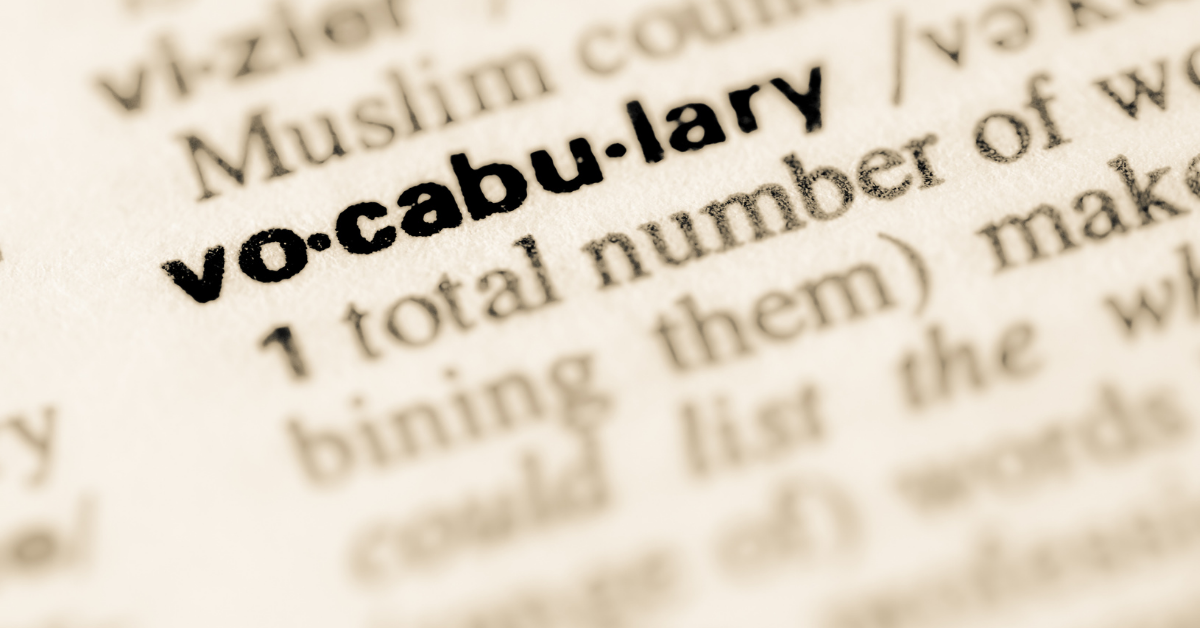
Successful students have a strong command of grade-appropriate language. The following research-based, cross-content, multi-grade strategies will help you support your learners in growing their vocab repertoire.
Semantic Maps
“Semantic Maps are a tool we use to help students identify, understand, and recall the meaning of words they read in the text,” says Lisa Van Gemert of Vocabulary Luau. “They’re research-based, they lend themselves to use with graphic organizers, they support struggling readers, and they are easy to use.”
Generally, semantic mapping follows a pattern: Focus on a singular word; generate a list of related vocabulary; sort and categorize words; and finally, describe connections between words and concepts in the map. This is a living work- as students continue to read and learn, new vocabulary can be added to the appropriate categories on the map.
Many semantic maps are created using a bubble or star layout. Another highly effective approach is List-Group-Label (Taba, 1967). This strategy is especially useful in differentiating instruction. Students can work through a closed-concept map (categories are pre-determined by instructor) or an open-concept map (students apply critical thinking to devise their own categories). One example is this Word Map template from WordMasters Pro which can be used to help students sort and learn new words.
Closed/Open Sorts
Sorts are a tangible form of semantic mapping. They allow students to process new information and vocabulary in a guided, structured way- while also encouraging critical thinking, rationalization and problem solving skills. (El Yaafouri, 2019). This strategy is particularly powerful in working with younger students and emergent lingual learners.
Sort decks can be created by writing individual vocabulary words on index cards (using a generated list, personal dictionary, unit vocabulary, or word wall). These decks can then be manipulated to form categories. In a closed sort, the categories are pre-determined by the facilitator (ex: vocabulary words related to earth science might be sorted into three named sets: metamorphic, igneous, and sedimentary). “Open sorts are similar to closed sorts, but differ in one critical area,” explains El Yaafouri. “In an open sort, students work independently or in work groups to devise, define and label their own categories, with only limited guidance from a teacher.”
One app that supports this strategy is called Red Herring. This app challenges students and adults alike with word sorting, building vocabulary skills for all users.
Word Analogies
Analogies, a form of mental semantic mapping, are powerful vocabulary builders. Instead of focusing on memorization, analogies highlight word relationships. The WordMasters Challenge, a national vocabulary and verbal reasoning competition, uses analogies as the very basis for the contest. Exploring vocabulary through analogies “helps students learn to think both analytically and metaphorically,” explains WordMasters Challenge. These types of exercises “develop verbal reasoning abilities and higher order thinking skills, improve logic and reading comprehension, and help foster a life-long love for learning.”
Co-operative Structures
Cooperative learning (CL) can be defined as “the instructional use of small groups so that students work together to maximize their own and each other’s learning”. (Johnson, etal, 1992). When purposefully planned and implemented, CL has been demonstrated to improve academic outcomes, boost SEL skills, and enhance vocabulary retention.
Vocabulary isn’t just about looking words up in a dictionary. In order to make new language learning stick, students must have opportunities to interact with words in a variety of contexts and across the four language domains (speaking, listening, reading and writing). Cooperative learning supports these aims.
We can stretch beyond think-pair-share to explore other strategies, like Inside-Outside-Circle, Fishbowl, or Numbered Heads. Descriptive Pairs is another cooperative structure with broad applications. To complete the activity, a pair of students sits back to back, with one student facing the front of the room. The viewer is presented with an image. He/she/they must then describe the image or idea, with the goal of getting the partner to guess the target word (without saying the word itself). This activity is especially useful for working through content-specific vocabulary (photosynthesis, metamorphosis) or abstract concept vocabulary (justice, civil rights).
Game Play
Gamification is a potent teaching and learning tool. Employing games in the classroom promotes engagement, critical thinking, team work, and time management skills. It can also create valuable connections to content, including vocabulary. Two easy-to-implement vocabulary games are word exchange and word relay.
To play word exchange, distribute vocabulary cards to half of the class, and matching definitions to the other half. Students must interact with peers to reason out possible matches. Once matches have been formed, pairs identify themselves and share their reasoning with the class, allowing for group discussion (and re-pairing of mismatched partners, as needed).
In word relay, students work in teams of 3-6. Each team moves to a separate corner or side of the room. Two decks of cards are placed in the center of the room. One contains content or unit-specific words; the second contains sentence building cards (various prepositions, conjunctions, punctuation marks, and “double underline” cards indicating the use of a capital letter). To play, one person from each team runs to the card decks, selects one from each pile, and returns to the team. This continues until a group has constructed a full, meaningful, and correctly punctuated sentence.
“Decades of research have confirmed the important role that vocabulary plays in reading comprehension and in students’ overall academic success,” concludes a report from National Geographic Learning. “Knowing the meanings of many words provides youth access to countless worlds of ideas and information.”
We know that students’ success- today and long into their future- depends on the words they can use to communicate and understand. Wherever in the learning process they are, now is the time to strengthen our learners’ vocabulary.

